Electricity is a fascinating and fundamental force that powers our modern world, yet its principles can seem almost magical to young learners.
Exploring electricity through hands-on experiments and activities not only demystifies this essential energy but also sparks a profound interest in science and technology.
In this carefully curated collection, we’ve assembled electricity experiments that cater to different age groups, skill levels, and learning styles. Each activity is designed to be safe, accessible, and packed with “wow” moments.
From building simple circuits and machines to exploring static electricity, these activities will make science fun and memorable.
1. Potato Power
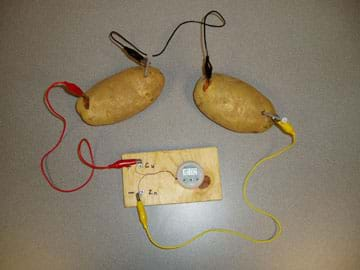
The Power Potato experiment is a fascinating activity that teaches students how chemical energy can be converted into electrical energy using a potato as a natural battery.
By inserting a copper and zinc electrode (such as a copper wire and a galvanized nail) into a potato and connecting them with wires to a small LED or clock, students can observe how the potato generates electricity.
Learn more: Teach Engineering
2. Modern Art Steady Hand Game
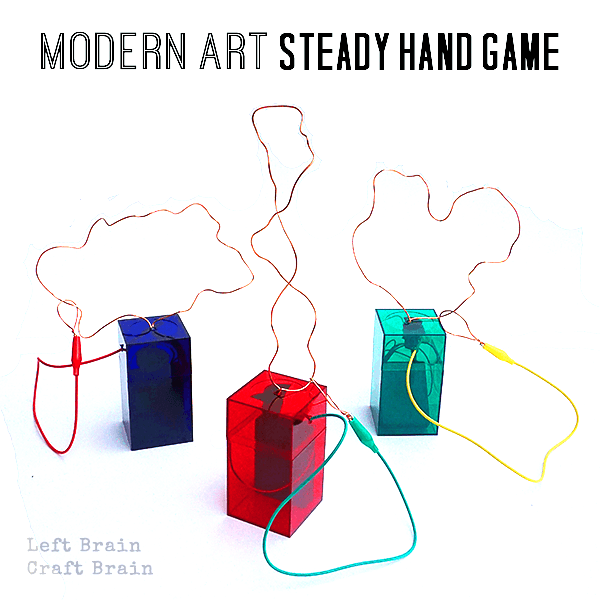
In this activity, students design a “modern art” structure using colorful wires shaped into abstract patterns, creating a playful obstacle course for a steady-hand game. By incorporating a simple circuit with a battery, buzzer, or light, the game challenges players to navigate a looped wire along the structure without touching it.
Learn more: Left Brain Craft Brain
3. DIY Electric Field Detector
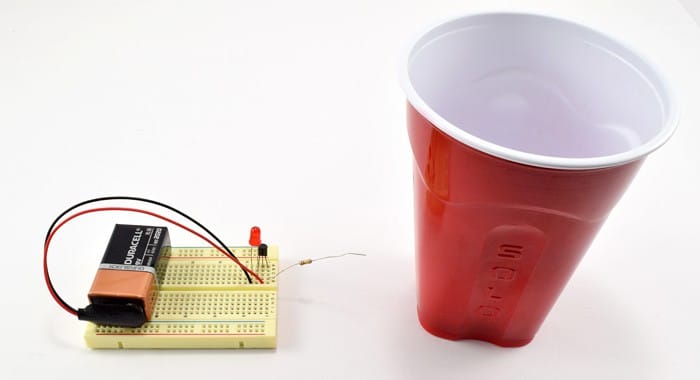
Create a DIY Electric Field Detector using simple materials like plastic cups to explore the invisible world of electric fields. This hands-on activity demonstrates how objects interact through electric charges.
Learn more: Science Buddies
4. Make a Coin Battery
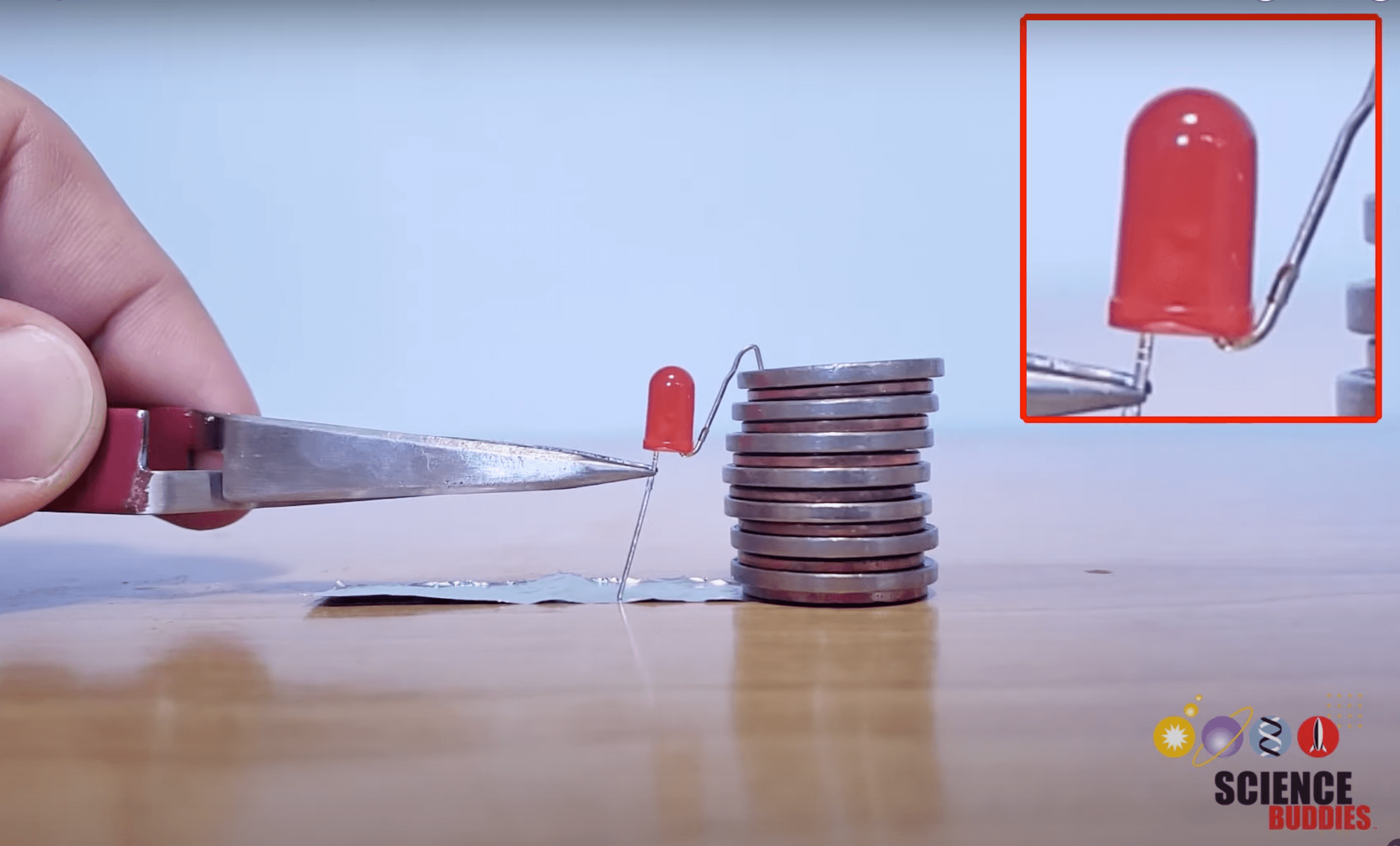
By stacking coins (such as pennies), pieces of cardboard soaked in a saltwater or vinegar solution, and aluminum foil, students create a battery capable of powering a small LED. Each layer acts as a cell, with the coins serving as electrodes and the soaked cardboard as the electrolyte.
Learn more: Science Buddies Org
5. Electric Play Dough
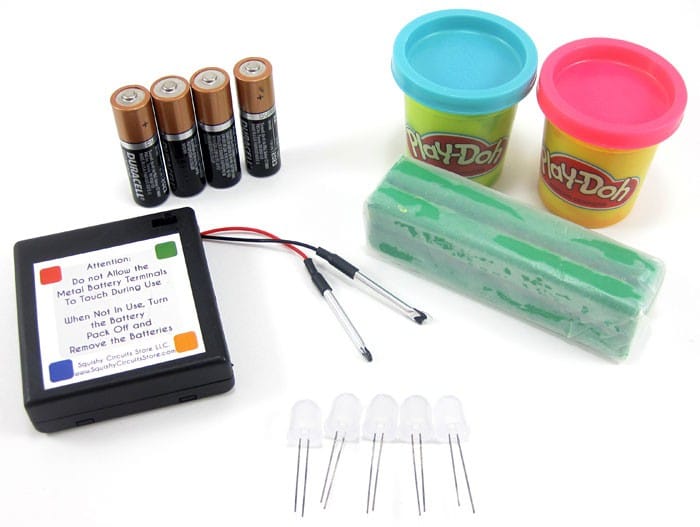
By shaping the dough into creative forms and connecting it to a power source like a battery pack with LED lights or small motors, students can experiment with making simple circuits.
Learn more: Science Buddies Org
6. Create Tiny Dancers with a Homopolar Motor
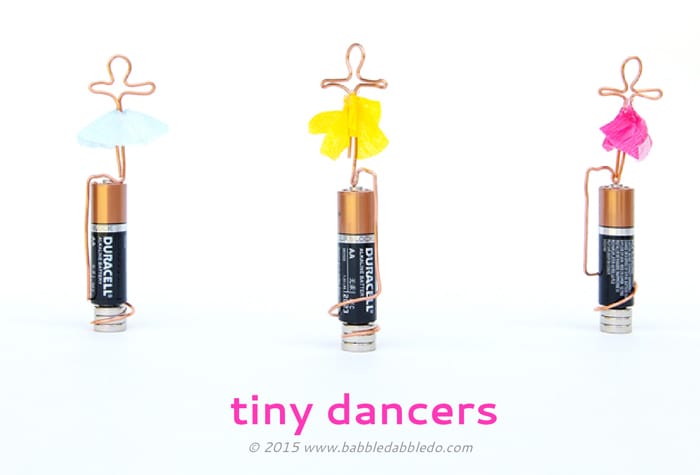
Build a simple homopolar motor by attaching a copper wire, magnet, and battery to create a circuit that generates motion.
Learn more: Babble Dabble Do
7. Soda Can Electroscope
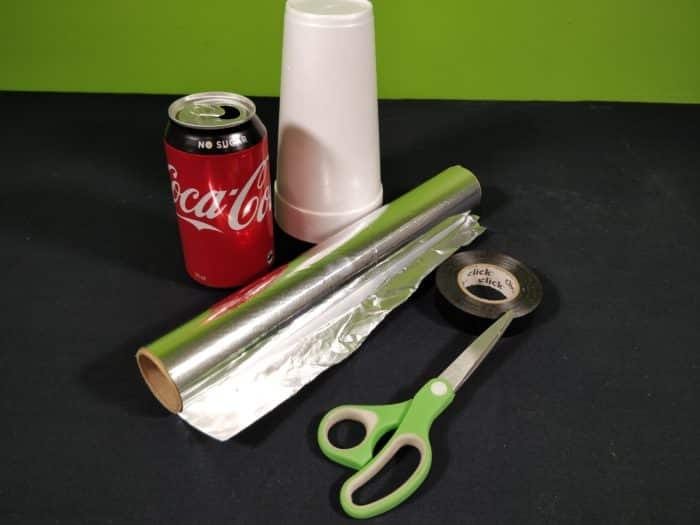
Build your own electroscope using simple materials! With a soda can, insulation tape, aluminum foil, and a Styrofoam cup, you can create a tool that detects electric charges. Assemble the can and foil on the cup, then bring it near various surfaces to observe how it reacts.
Learn more: Fizzics Education
8. Dirt Battery Experiment
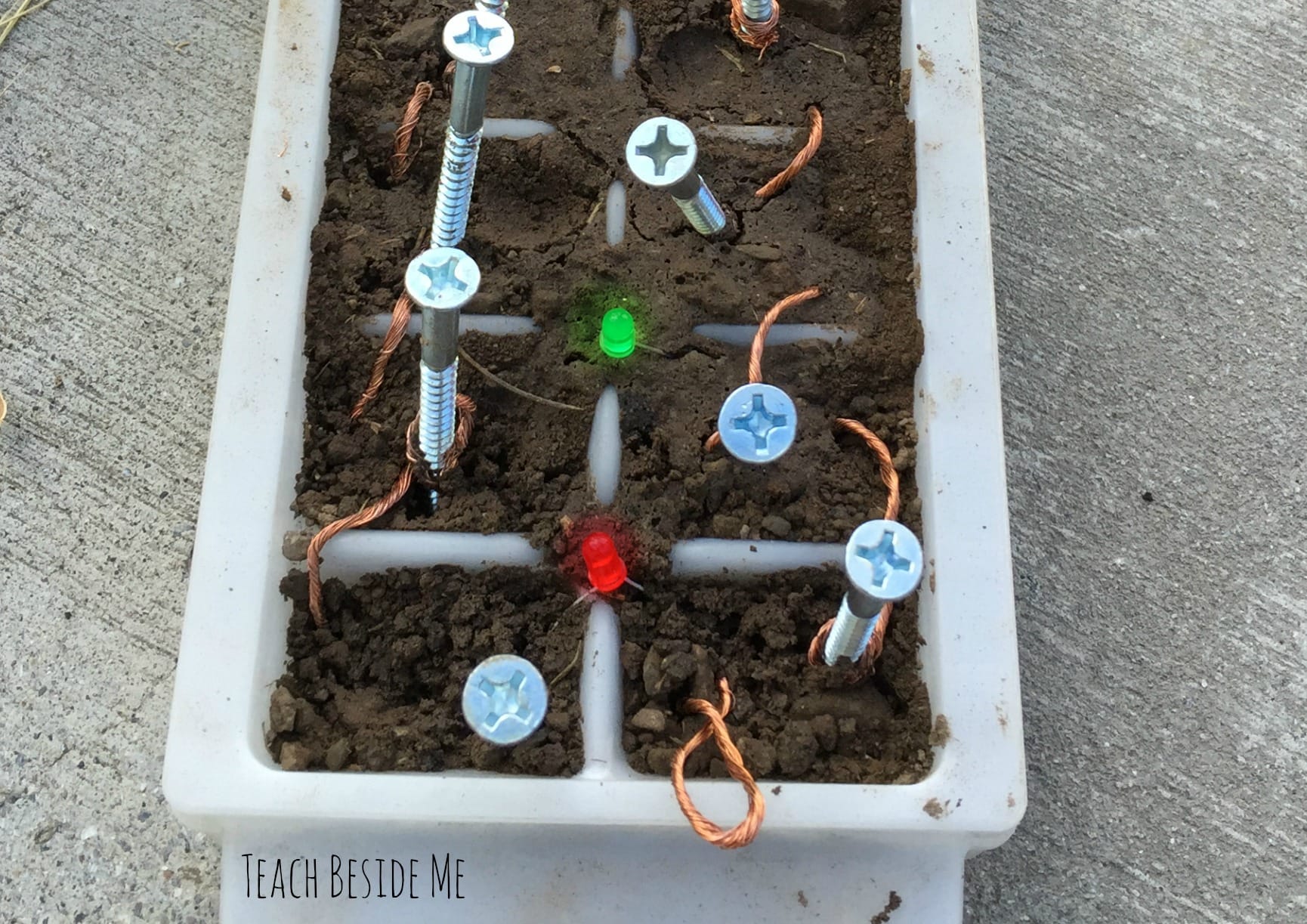
Turn soil into a surprising source of energy with this creative experiment! Using copper wire, screws, and an ice tray filled with dirt, you’ll create a circuit that powers small lights. Watch as the charge generated by the soil lights up the bulbs, demonstrating the amazing potential of natural materials in producing electricity.
Learn more: Teach Beside Me
9. The Lemon Battery
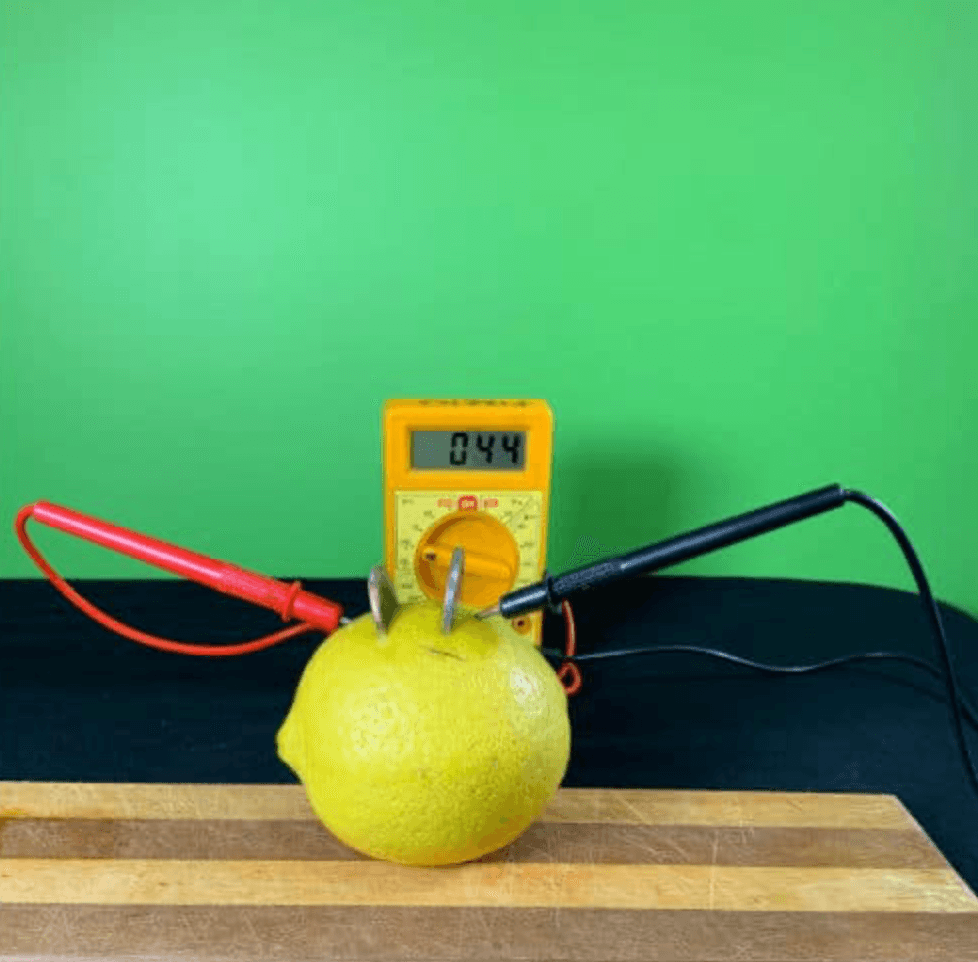
Turn an ordinary lemon into a mini power source with this classic science experiment. Insert a zinc nail and a copper coin into a lemon, connect wires to a small LED, and watch it light up! Explore the science of chemical reactions and learn how citrus acids generate electricity in this fun and educational activity.
Learn more: Fizzics Education
10. DIY Index Card Flashlight
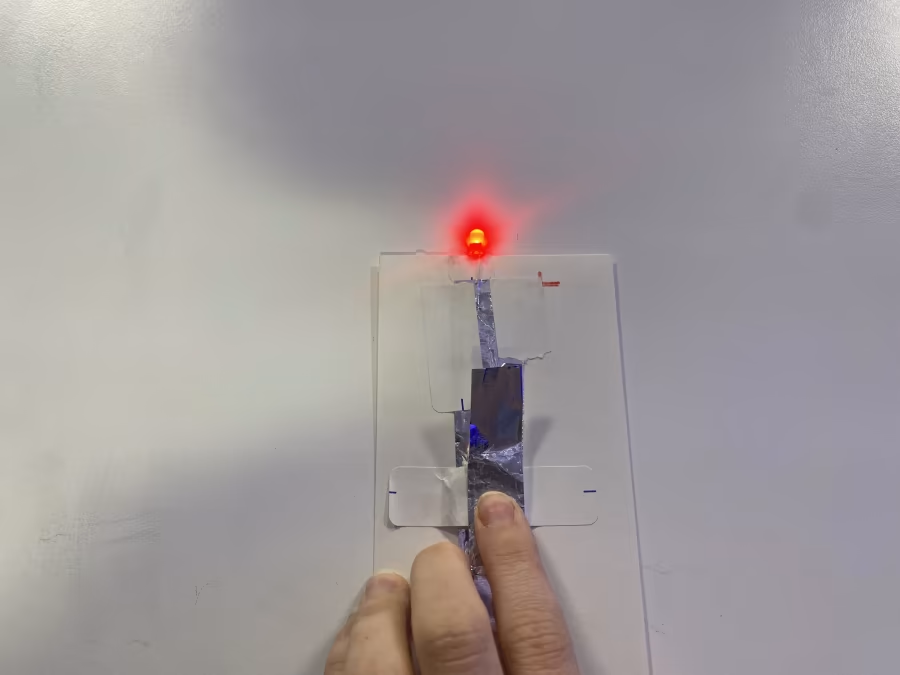
Using materials such as an index card, a small LED light, a coin cell battery, and copper tape, students can construct their own working flashlight. By folding the card and strategically placing the components, they create a circuit that lights up when the card is pressed.
Learn more: KSAT
11. Creating a Light-Up Magic Wand with Simple Electronic
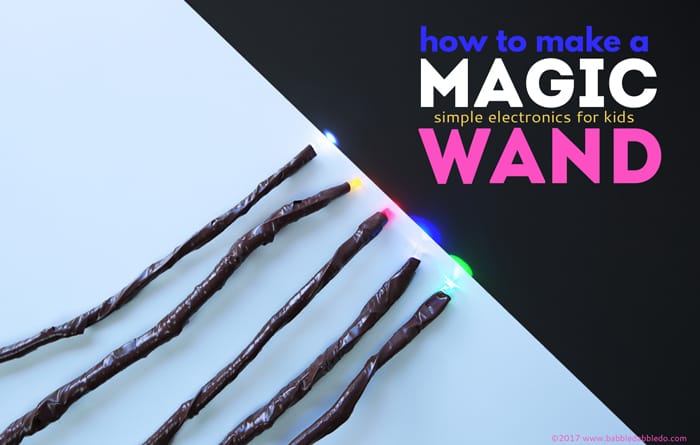
Using basic electronic components like a battery, LED, and wires, craft your own light-up magic wand. Shape the wand with materials like paper, cardboard, or craft sticks, and embed the LED at the tip.
Learn more: Babble Dabble Do
12. Build a Play Dough Series Circuit
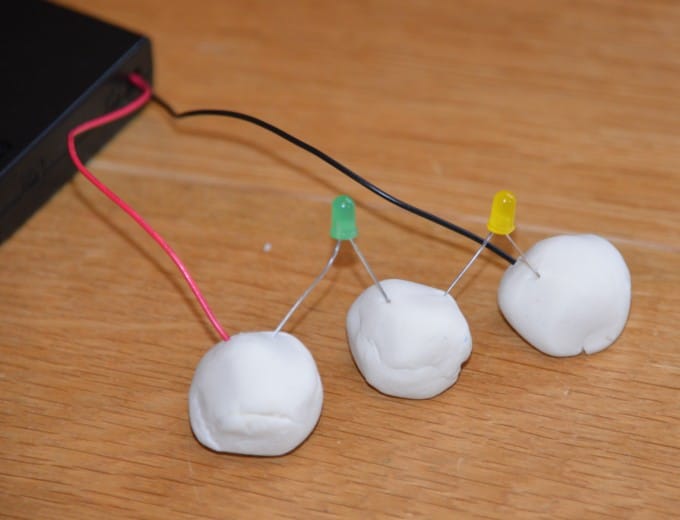
Create a simple series circuit by forming conductive and insulating play dough into shapes and connecting them to a battery and LED lights.
In this activity, students will learn how electricity flows through a circuit and how components like batteries, wires, and bulbs work together.
Learn more: Science Sparks
13. Conductor or Insulator?
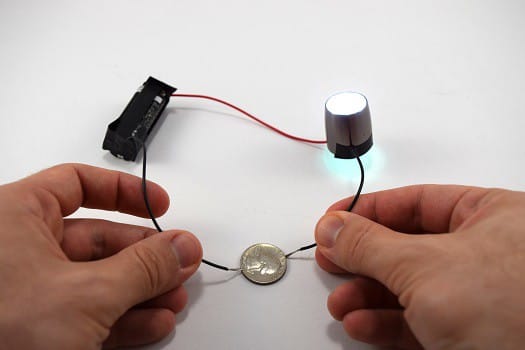
By connecting a coin to a battery and light bulb, students can test if the material is a conductor (allowing electricity to flow and lighting up the bulb) or an insulator (preventing the flow of electricity, keeping the bulb off).
Learn more: Science Buddies Org
14. Light Up Your Painting with Electric Paint
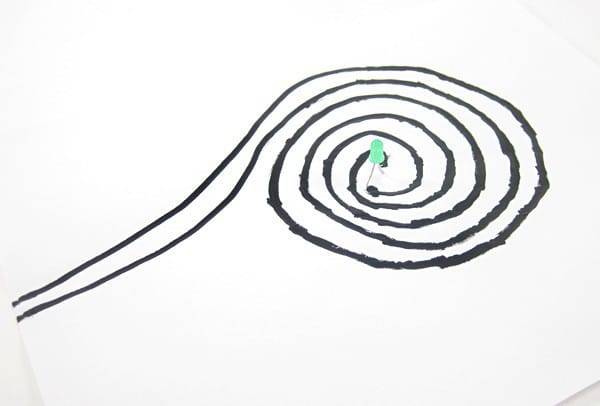
Electric paint offers an exciting alternative to traditional copper wires when creating artistic circuits. This hands-on activity combines art and science, allowing students to design a circuit with a battery and an LED light, where electric paint serves as the conductor.
Learn more: Science Buddies
15. Pencil Resistors
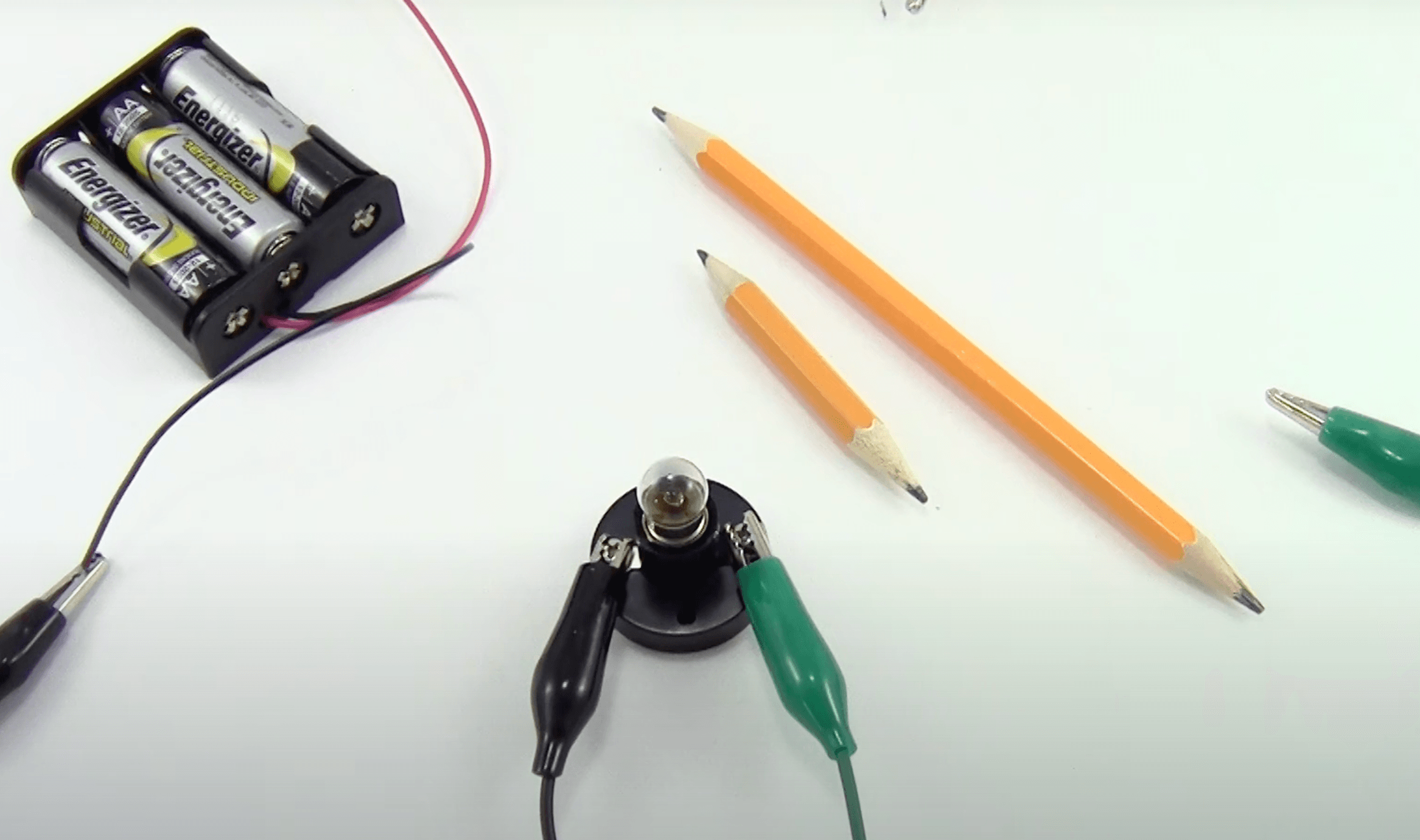
By sharpening both ends of a graphite pencil and connecting it to a circuit with wires, a battery, and an LED, students can observe how the pencil acts as a resistor.
Learn more: Science Buddies Org
16. Testing Water’s Conductivity
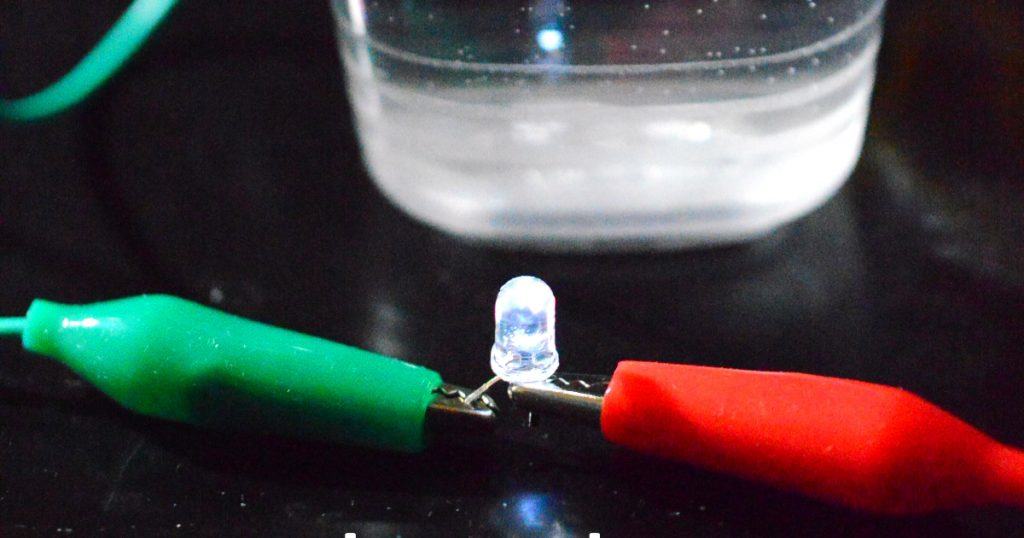
Discover the science behind conductivity with this fascinating water and electricity experiment. Build a simple circuit using an LED light, batteries, and wires, then test how different types of water affect the flow of electricity
Learn more: Rookie Parenting
17. Building a Simple Electromagnetic Train
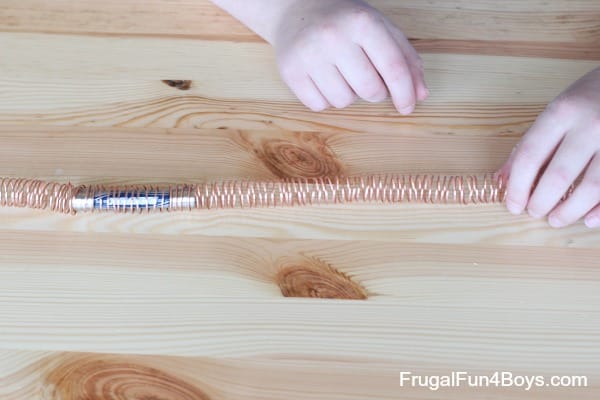
To build your own electromagnetic train, start by wrapping copper wire tightly around a battery to create a coil. This will be the core of your electromagnetic track. Attach the ends of the coil to a power source, such as a battery, and place magnets along the track to guide the movement.
Learn more: Frugal Fun 4 Boys
18. DIY Saltwater Battery
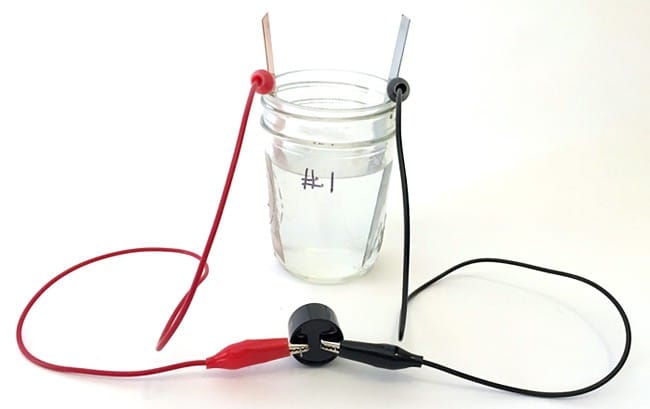
With just saltwater, metal electrodes (like zinc and copper), and a simple setup, generate electricity to power small devices. This experiment is perfect for exploring how chemical reactions can be used to produce clean, sustainable energy.
Learn more: Science Buddies
19. Exploring Coil Effects on Electric Generators
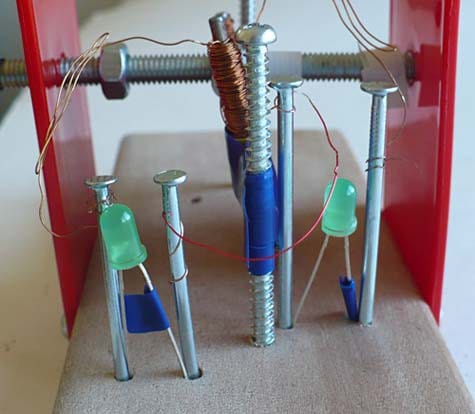
Discover how varying the number of loops and the coil’s configuration impacts the output. This interactive activity is ideal for understanding electromagnetic induction and the science behind modern power generation!
Learn more: Science Buddies
20. What a Solar Cell Output Changes with Light
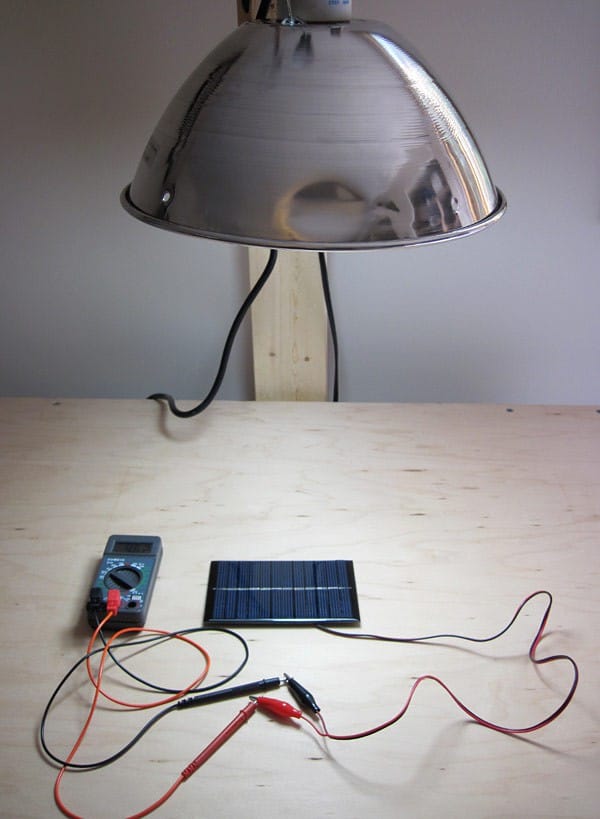
Explore how light intensity impacts the performance of a solar cell by observing its output under varying conditions. Using light bulbs of different wattages, measure the solar cell’s open-circuit voltage and short-circuit current.
Learn more: Science Buddies
21. Turning Mud into Electricity
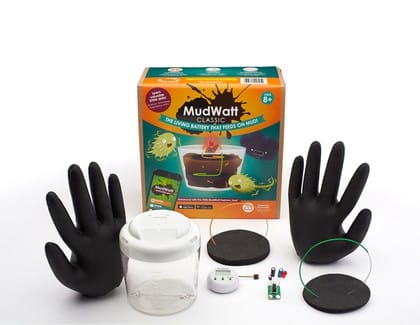
Harness the energy produced by microorganisms in the soil to generate electricity. As these microbes break down organic matter, they release electrons that can power small devices.
Learn more: Science Buddies
22. Spinning Christmas Tree
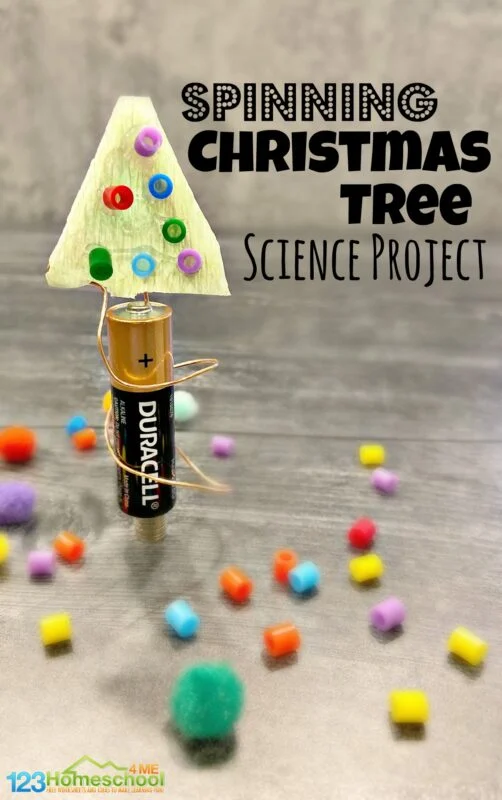
Add a festive twist to science with a spinning Christmas tree experiment! Using a simple setup of a copper coil, a battery, and magnets, create a tree that spins on its own.
Learn more: 123 Homeschool 4me
23. Paper Circuits Cubes
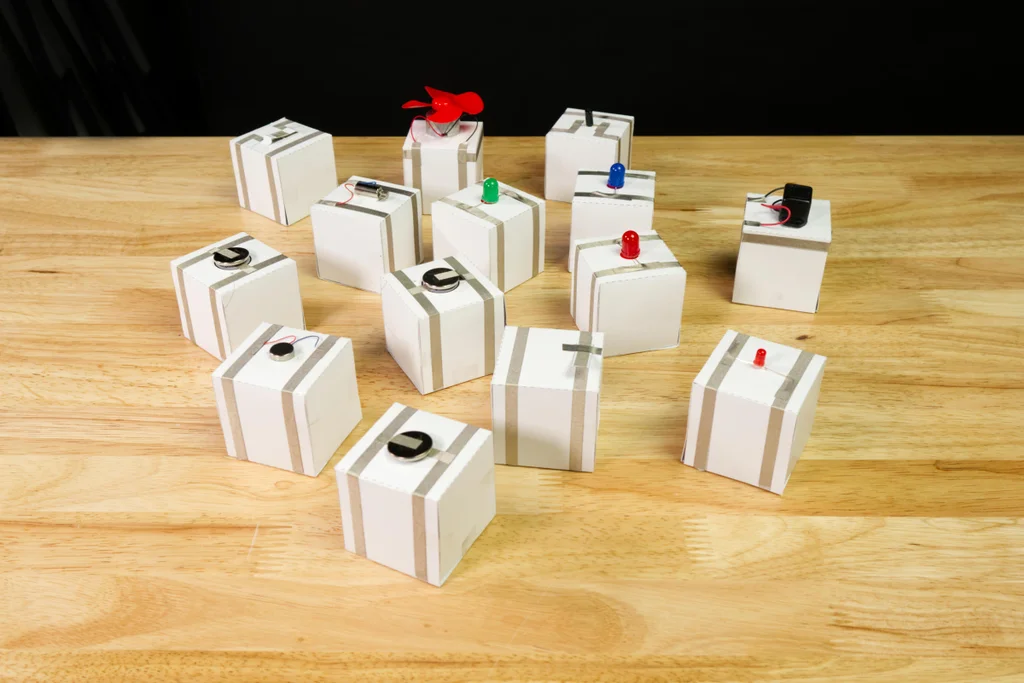
Using conductive tape, LEDs, and a battery, design foldable paper cubes that light up when assembled. This activity introduces basic electrical circuits while fostering artistic expression, making it perfect for learners of all ages.
Learn more: Instructables
24. DIY Robot Car
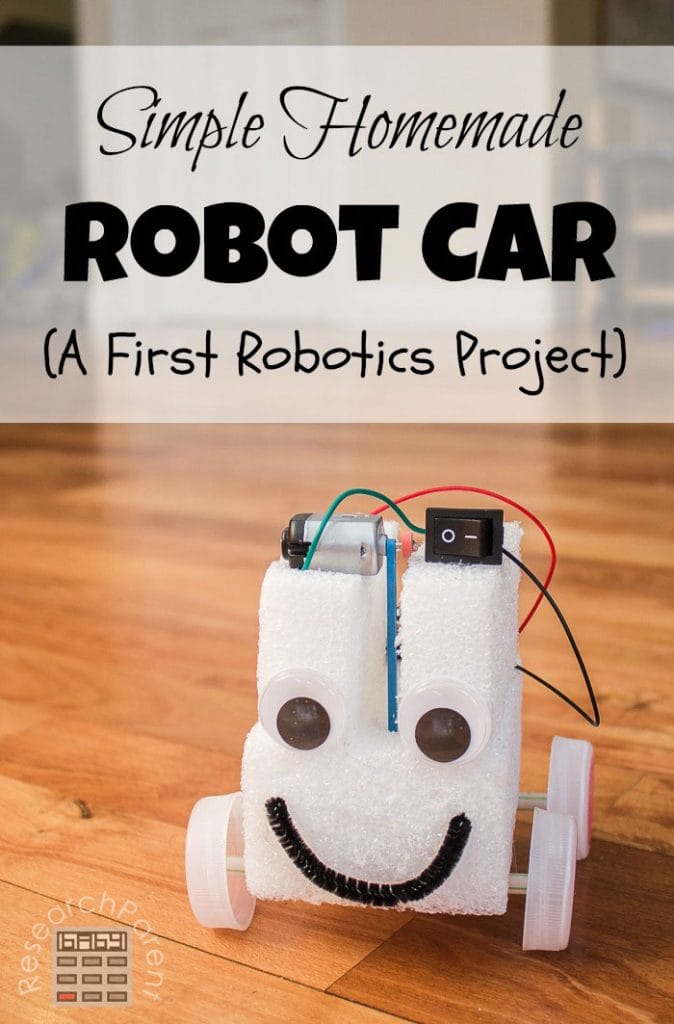
Using a simple motor, wheels, batteries, and a chassis, assemble a motorized car that moves on its own. Customize its design, experiment with speed and direction, and explore the basics of robotics and engineering in this fun, hands-on project.
Learn more: Research Parent
25. Paper Circuits with Copper Tape
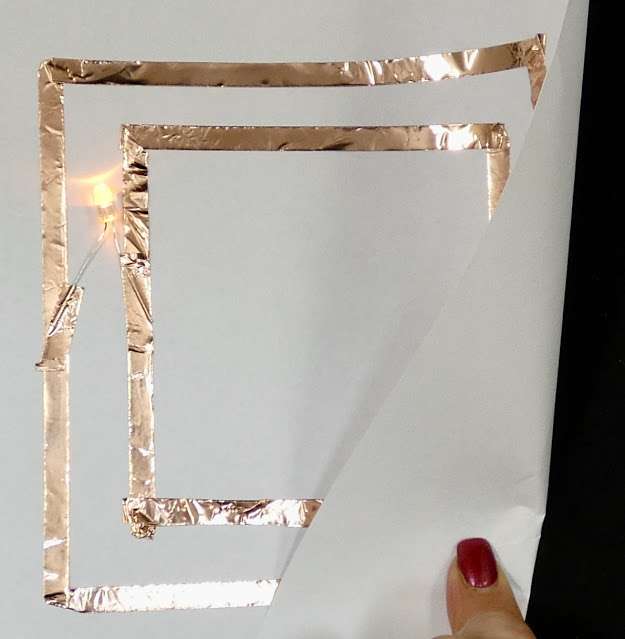
Create an interactive and colorful circuit using copper tape on paper! This DIY project allows you to design circuits using copper tape, LED lights, and a battery. It’s a fun and creative way to learn about electricity and circuits while crafting a glowing piece of art.
Learn more: Teaching Science US
26. Build an Electromagnet Using a Battery
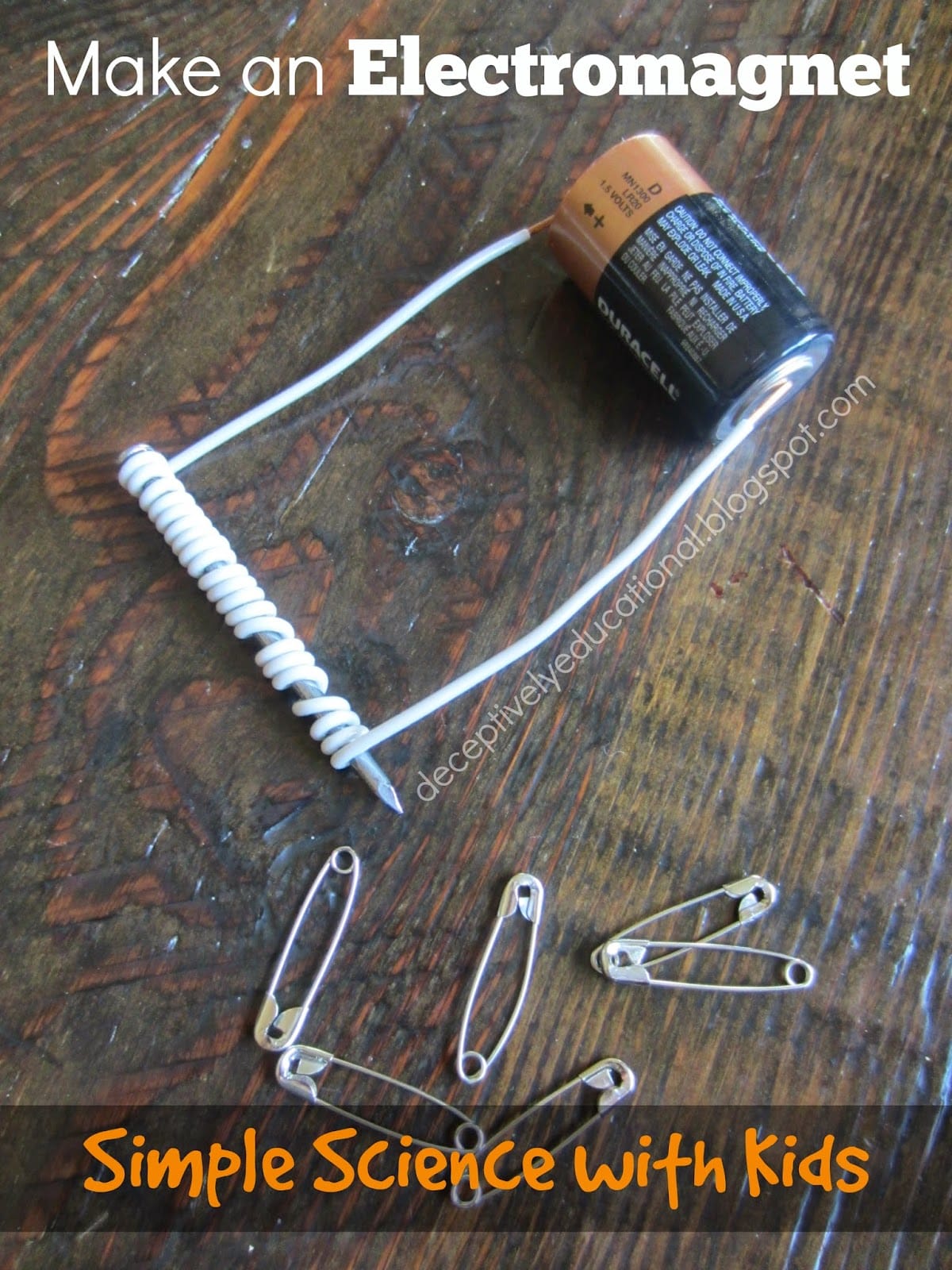
Connect the free ends to the battery terminals, and watch as the nail becomes magnetized! Use it to pick up small metal objects like safety pins or thumbtacks.
Learn more: Deceptively Educational Blog Spot
27. Building an Electromagnet
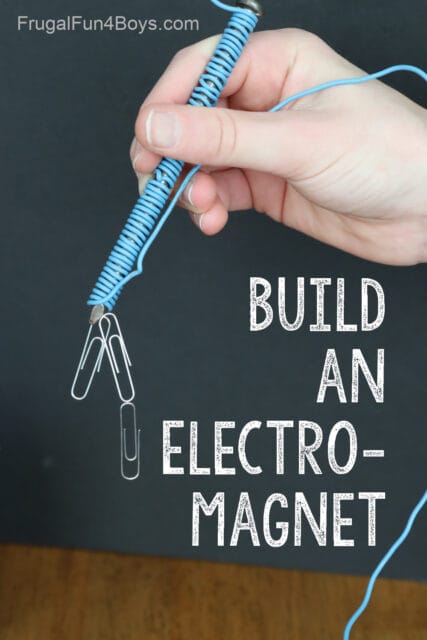
Before connecting the wires to the battery, try using the nail wrapped in wire to pick up paper clips it won’t attract anything yet!
Once the wires are connected to the battery, the flow of electricity through the coil magnetizes the nail, turning it into an electromagnet.
Learn more: Frugal Fun 4 Boys
28. DIY Motorized Coloring Machine
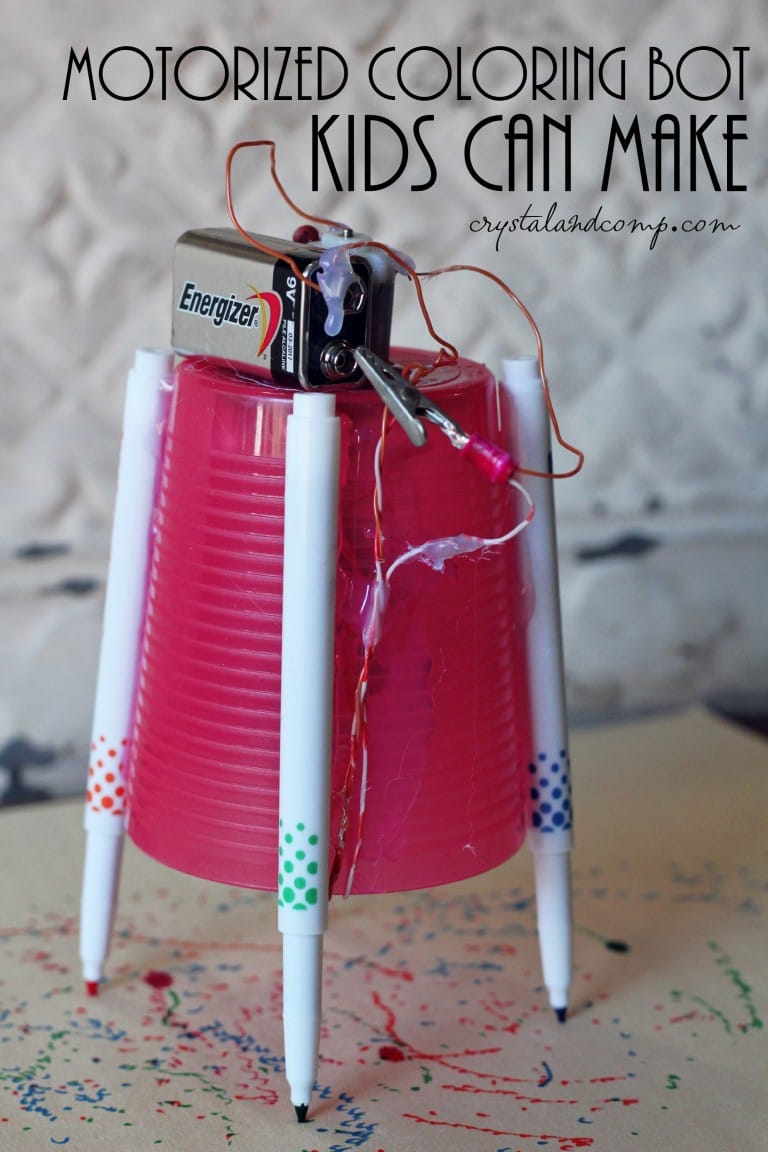
Using a battery, a cup, and a motor, create a device that spins colorful pens or markers to draw amazing patterns. Attach the motor to the cup, secure the battery, and position the pens as legs. Once powered, the machine vibrates and moves unpredictably, leaving colorful trails.
Learn more: Crystal Comp
29. Make a Bristle Bot
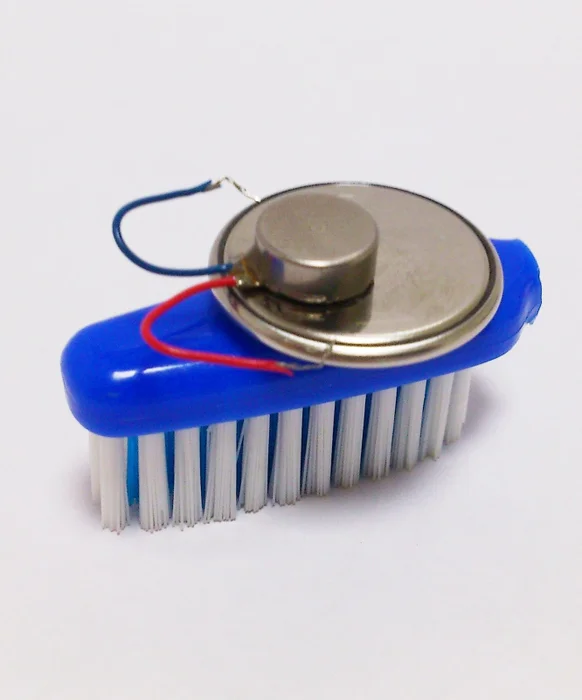
Create a simple and exciting mini robot with just a toothbrush head, a small motor, and a battery! Attach the motor and battery to the toothbrush head, ensuring balance, and watch your bot buzz and move across surfaces.
Learn more: Instructables
30. Mini Vacuum
Using a small motor, a plastic bottle, and a fan blade, create a compact device perfect for cleaning tiny messes like crumbs or dust. Attach a funnel-shaped nozzle and a simple collection bag or filter for debris.

